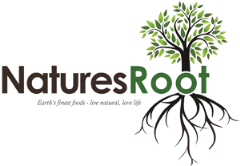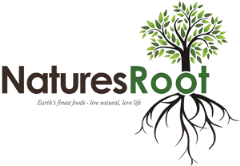News » vitamins
-
The Benefits of Broccoli Raab Seeds
The Health Benefits of Broccoli Raab Seeds
The Health Benefits of Broccoli Raab Seeds
Broccoli raab, also known as rapini, is a leafy green vegetable from the cabbage family. It's a common ingredient in many Italian and Chinese dishes, and it has a distinct, slightly bitter flavour. But did you know broccoli raab seeds have numerous health benefits?
High Fibre Content
The high fibre content of broccoli raab seeds is one of their key benefits. One serving of these seeds contains a high amount of fibre, which is essential for maintaining a healthy digestive tract and preventing constipation. Broccoli raab seeds are strong in fibre and protein, making them a great vegetarian or vegan supplement.
Vitamins and Minerals
Broccoli raab seeds are high in vitamins and minerals, as well as having digestive benefits. They are abundant in vitamin C, which is essential for maintaining a healthy immune system and skin. They are also high in iron, which is required for oxygen transfer to the cells, and calcium, which is required for strong bones and teeth.
Other Health Benefits
But wait, there's more! Broccoli raab seeds have also been shown to have a number of other health benefits. Some studies have found that they may help to lower blood pressure and reduce the risk of heart disease, while others have found that they may have anti-inflammatory properties and may even help to protect against some types of cancer.
Adding Broccoli Raab Seeds to Your Diet
Consider adding broccoli raab seeds to your diet the next time you're looking for a nutritious, fiber-rich snack. These tiny seeds pack a nutritional punch whether sprinkled on a salad or blended into a smoothie.
-
Unlock the Power of Wheatgrass: A Guide to Boosting Your Health and Wellness

Why consume Wheatgrass
If you're looking to boost your health and wellness, consider adding fresh wheatgrass to your diet. This nutrient-rich grass has numerous benefits that make it worth incorporating into your routine.
First and foremost, wheatgrass is an excellent source of vitamins and minerals. It is high in vitamins A, C, and E, as well as iron, magnesium, and calcium. It also contains a range of antioxidants and enzymes that help to support overall health.
In addition to its nutrient content, wheatgrass has a number of specific health benefits. It is thought to help improve digestion, boost the immune system, and reduce inflammation in the body. Some research suggests that it may also have a positive impact on blood sugar levels and cholesterol levels.
One of the key reasons why consuming fresh wheatgrass is so beneficial is that it is a highly concentrated source of nutrients. Just a small amount of wheatgrass packs a powerful punch of nutrients that can help to support overall health and wellness.
Another advantage of consuming fresh wheatgrass is that it is easy to incorporate into your diet. It can be juiced, added to smoothies or salads, or even dried and powdered for use as a supplement.
If you're looking to boost your health and wellness, give fresh wheatgrass a try. It's a tasty and convenient way to get a healthy dose of vitamins, minerals, and other nutrients that can help to support your overall well-being.

Tips for growing Wheatgrass
Here are some tips for growing wheatgrass:
- Use high-quality wheat seeds that are specifically meant for growing wheatgrass.
- Soak the seeds in water for about 8 hours before planting. This will help to speed up the germination process.
- Spread the soaked seeds evenly over a tray or pot filled with potting soil or seed-starting mix. Cover the seeds with a thin layer of soil or peat moss.
- Keep the soil moist but not waterlogged. Water the soil thoroughly, but be careful not to oversaturate it.
- Place the tray or pot in a sunny location where it will receive plenty of indirect light.
- Harvest the wheatgrass when it reaches about 7-10 inches in height, which should take about 7-14 days.
- Use a sharp knife or scissors to cut the wheatgrass close to the soil line. Rinse the wheatgrass thoroughly before using it.
- Wheatgrass can be juiced or added to smoothies, salads, and other dishes. It can also be dried and powdered to use as a supplement.


